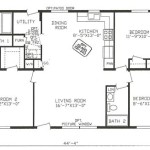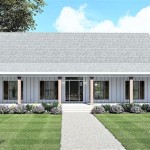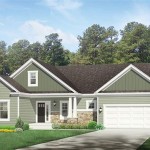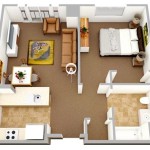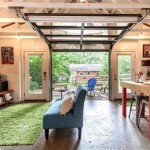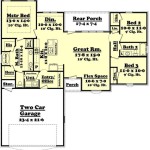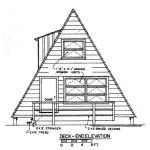House Plans for View Lots: Maximizing Landscape and Livability
Developing a house plan for a view lot presents a unique set of opportunities and challenges. Unlike traditional plots, view lots typically offer a significant advantage – the presence of a captivating panorama, be it of a mountain range, ocean expanse, or urban skyline. The primary goal of a house plan designed for such a property is to maximize the enjoyment and incorporation of this view into the daily lives of its inhabitants. This requires careful consideration of orientation, window placement, structural design, and landscaping to harmonize the built environment with the natural surroundings.
The success of a house plan on a view lot hinges on a comprehensive understanding of the site-specific conditions. This includes analyzing not only the view itself but also the topography, prevailing winds, sun exposure, and potential privacy concerns. These factors will dictate the optimal placement of the house on the lot and the arrangement of interior spaces to leverage the view while mitigating any drawbacks related to the environment.
Understanding Site-Specific Considerations
Before even considering architectural styles or interior layouts, a thorough site assessment is crucial. This assessment should encompass several key areas:
Topography: View lots are often characterized by sloping terrain. Understanding the slope's gradient and potential for erosion is vital for determining the foundation type, drainage solutions, and accessibility. Steep slopes may necessitate specialized foundation systems like stilts or retaining walls, which can significantly impact the overall cost and design aesthetic.
Orientation and Sun Exposure: The direction in which the view is oriented significantly impacts the amount of sunlight the house will receive. Eastern-facing views will be bathed in morning light, while western-facing views will experience strong afternoon sun. Careful consideration of window placement and shading strategies is essential to prevent overheating and glare, particularly in rooms with expansive glazing designed to capture the view. Passive solar design principles should be incorporated to maximize energy efficiency and minimize reliance on artificial heating and cooling.
Prevailing Winds: Exposed view lots can be particularly susceptible to strong winds. Understanding the prevailing wind direction is crucial for designing the building envelope to minimize wind resistance and prevent drafts. Windbreaks, such as landscaping or strategically placed architectural elements, can also be incorporated to create more comfortable outdoor living spaces.
Privacy: While a view lot offers the advantage of expansive vistas, it can also compromise privacy, especially if the property is located in a densely populated area. Careful consideration should be given to window placement, landscaping, and the design of outdoor living spaces to create a sense of seclusion and prevent unwanted views from neighboring properties.
Local Building Codes and Regulations: Adherence to local building codes and regulations is paramount. These regulations may include restrictions on building height, setbacks from property lines, and allowable building materials. In many cases, view lots may be subject to stricter regulations designed to preserve the scenic quality of the area. Consulting with local planning authorities early in the design process is essential to ensure compliance.
Optimizing the House Plan for the View
Once the site-specific conditions have been thoroughly assessed, the focus shifts to developing a house plan that effectively integrates the view into the design. This involves making strategic decisions about the layout of interior spaces, the placement of windows and doors, and the incorporation of outdoor living areas. Several key considerations come into play:
Prioritize Key Living Spaces: Rooms where residents spend the most time, such as the living room, dining room, and master bedroom, should be strategically positioned to maximize the view. These spaces should be designed with large windows or sliding glass doors that frame the panorama and allow for abundant natural light. Open floor plans can further enhance the sense of connection to the outdoors by creating uninterrupted sightlines throughout the house.
Window Placement and Design: The size, shape, and placement of windows are critical to capturing the desired view while mitigating potential drawbacks. Floor-to-ceiling windows offer the most expansive views, but they can also contribute to heat gain or loss. High windows can bring in natural light without compromising privacy, while clerestory windows can provide views of the sky and surrounding landscape. Consider using energy-efficient windows with low-E coatings to minimize heat transfer and glare.
Outdoor Living Spaces: Decks, patios, and balconies are essential for extending the living space outdoors and maximizing the enjoyment of the view. These outdoor areas should be seamlessly integrated with the interior spaces, creating a smooth transition between indoors and outdoors. Consider incorporating covered areas to provide shade and protection from the elements, allowing for year-round enjoyment of the view.
Orientation of the House: The orientation of the house on the lot can significantly impact the amount of sunlight it receives and the privacy it offers. Orienting the house to take advantage of passive solar heating and cooling can reduce energy consumption and improve comfort. Consider the placement of the garage and other less-used spaces to shield the living areas from prevailing winds or undesirable views.
Height Restrictions and Building Codes: Be mindful of height restrictions and local building codes that may limit the height of the house. These restrictions can impact the design of the roofline and the overall massing of the building. Work closely with an architect and structural engineer to ensure that the house plan complies with all applicable regulations.
Architectural Styles and Materials
The choice of architectural style and building materials can significantly impact the overall aesthetic and functionality of a house on a view lot. The style should complement the surrounding landscape and reflect the personal preferences of the homeowner. Materials should be durable, weather-resistant, and aesthetically pleasing.
Contemporary Designs: Contemporary architectural styles often feature clean lines, large windows, and open floor plans, making them well-suited for view lots. These designs often incorporate natural materials, such as wood, stone, and glass, to create a sense of harmony with the environment. The use of sustainable building materials and energy-efficient technologies is also common in contemporary designs.
Traditional Designs: Traditional architectural styles, such as Craftsman, Farmhouse, and Mediterranean, can also be adapted for view lots. These styles typically feature more intricate detailing and a greater emphasis on craftsmanship. The materials used in traditional designs often include brick, stucco, and wood shingles. Careful consideration should be given to window placement and orientation to maximize the view while maintaining the character of the style.
Material Selection: The choice of building materials should be guided by the climate, the architectural style, and the budget. Durable, low-maintenance materials are essential for withstanding the elements and minimizing long-term costs. Consider using locally sourced materials to reduce transportation costs and support local economies. Proper insulation is crucial for maintaining a comfortable indoor environment and reducing energy consumption.
Blending with the Landscape: The house should be designed to blend seamlessly with the surrounding landscape. This can be achieved through the use of natural materials, earth-toned colors, and landscaping that complements the existing vegetation. Consider incorporating green roofs or living walls to further integrate the house into the environment.
Developing a house plan for a view lot requires a careful balancing act between maximizing the enjoyment of the view and addressing the practical considerations of site-specific conditions, building codes, and personal preferences. By thoroughly understanding these factors and working with experienced professionals, it is possible to create a home that is both visually stunning and functionally sound, providing a lifetime of enjoyment.

Great For The Rear View Lot 35440gh Architectural Designs House Plans
House Plans For View Lots From Visbeen Architects Builder

Modern Narrow House Plan View Park Beach Plans Designs

Modern House Plan Sloping Lot Contemporary Style 5590 Vista
House Plans For View Lots From Visbeen Architects Builder

20 House Plans With Lofts Tiny Small Luxury Designs Blog Homeplans Com

Home Plans With Lots Of Windows For Great Views

It Is Common To Find Expansive Patios Decks Or Walkout Basements In View Lot House Plans These Are Seamlessly Connected Basement Design
House Plans For View Lots From Visbeen Architects Builder

Plan 056h 0005 The House

